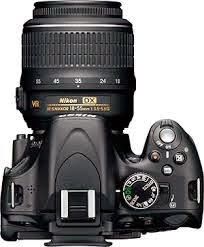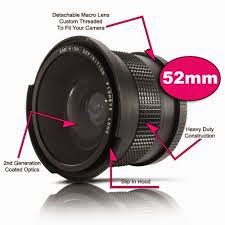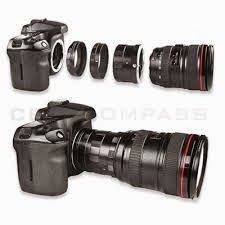type='html'>
Nikon D5100 Macro Lens Review
Nikon D5100 Macro Lens Review - The Nikon D5100 transports in pack structure with the same AF-S DX NIKKOR 18-55mm f/3.5-5.6g VR lens that is fused in D3000, D3100, and D5000 packs. To better fight with models from brands, for instance, Olympus, Pentax and Sony that have in-wisdom toward oneself modification, this pack lens goes hand in hand with Nikon's exceptional Vibration Reduction (VR) advancement to help modify for cam shake. We attempted a sample of the AF-S DX NIKKOR 18-55mm f/3.5-5.6g VR on Slrgear.com. Optical execution is so-so completely open, yet the lens is prepared for good sharpness if stopped down one or two f-stops, and the included picture alteration should turn out to be helpful in low-light circumstances.

While sharpness completely open is simply typical, this fresher pack lens performs ideal by and large talking over the initially non-VR 18-55mm, and is immensely better in the matter of flare: The past variation was obligated to rather stunning veiling flare when shooting high-separation subjects under magnificent conditions.
Unit lenses work splendidly enough for most buyers, and fill their need, kicking you off without utilizing up each and every penny; however a tremendous bit of the interest with Slrs is that you can without a doubt trade up to a better lens when your records improve, and create your compass to more broad plot, telephoto, or macro photography just by adding to your lens gathering. The 18-55mm VR lens that goes hand in hand with the Nikon D5100 will make a fine indicating until such time as arrangement and yearning lead you to start constructing a lens aggregation.

Lens Compatibility
Like the Nikon D40, D60, D3000, D3100 and D5000 before it the Nikon D5100 drops change toward oneself assistance for the more prepared AF lenses whose core frameworks were dead set from the cam. These lenses have what looks like a little screwdriver opening on their mounting spine that couples with a bulging, screwdriver-looking shaft on the cam body. A motor in the cam body is in this way required to drive the lens mechanics to adjust focus.
Later Nikkor lenses have AF motors consolidated with the lens body which tend to be both faster and quieter than the old-style drive skeleton, and allowing the cam body to be lighter, more diminutive and less lavish. These all the more progressive lenses pass on an AF-S or AF-I task in their name, and are the primary sorts of lenses the D5100 can self-modify with. CPU-arranged lenses requiring understood focus motors can be used as a piece of manual focus mode, and sort G or D lens sorts will in like manner help full 3d shade system metering for more exact exposures, particularly when burst is persistently used. (You can tell CPU-arranged lenses by the set of five electrical contacts showed as a reconsideration of the lens rib.)

Auto Distortion Control
The Nikon D5100 joins the association's Automatic Distortion Control work, an interesting idiosyncrasy that was displayed in its trailblazer. Enabled through the Shooting menu, this option characteristically alters for barrel and pincushion twisting in JPEG records, and works with the greater part of the association's Nikkor D- and G-sort lenses, aside from PC, Fisheye and certain diverse lenses. We found that Automatic Distortion Control worked especially well with the Nikkor 18-55mm VR lens in our testing of the earlier D5000 model.
The Nikon D5100 moreover offers mutilation modification as a post-planning limit, available from the Retouch menu. The playback-mode limit grants you to make a copy of a picture in the wake of applying either a customized change with manual aligning, or a manual amendment with a coarser-grained adjustment whose effect is inspected on the cam's LCD show.

Focusing Options
The Nikon D5100 offers the same Multi-CAM 1000 stage distinguishment self-change sensor module that is for a spell prior appeared in the D3000, D3100 and D5000 among others the Multi-CAM 1000 module offers 11 focusing centers of which the center point is a cross-sort sensor. As in the D5000, the evaluated AF point territories are indicated with frail dull markings, illuminated by single red Leds. The LED proofs, however little, are awe inspiring and easy to see, and thankfully none of them "empty" into distinctive centers, an issue we'd once seen with the D3100.
The Nikon D5100 provides for you an opportunity to pick either auto or manual concentrate, yet it doesn't have the little AF mode dial on the front of the cam as found on higher-end Nikon Dslrs. Rather, the switch on the lens must be used. Setting the switch to "M" puts the lens into manual focus mode, while "A" spots it in self-change mode. Single-servo (AF-S), Continuous-servo (AF-C), Auto-servo (AF-An) and Manual focus (MF) decisions can be picked through the menu skeleton. (For Live View or film shooting, there's no AF-A mode, and the AF-C mode is supplanted by a similarly meeting expectations mode named Full-time servo AF.)

Single-servo AF is best for stationary things, as the cam sets think simply once when the Shutter get is at first pressed mostly (or if the AF-ON limit is arranged, when the AE-L/ AF-L get is pressed). Steady servo AF and the Live View/ film Full-time servo AF both suggest that the cam determinedly changes the concentrate, the length of the Shutter get is part of the way pressed, suitable for moving articles. In Auto-servo AF mode, the cam begins focus operations in Single-servo mode, yet switches to Continuous-servo AF in case it recognizes development inside the element AF range.
Like higher-end Nikon Slrs, there's a central refinement amidst Single and Continuous Servo modes: In Single-servo mode, the screen won't release unless the lens is focused or the lens itself is arranged to manual focus - what's known as Focus Priority. In Continuous-servo mode at any rate, you can pick between Focus or Release Priority. In the late, the shade will fire paying little personality to the state of focusing.
Against Dust Technology
The Nikon D5100 consolidates a two dimensional system to doing combating dust the dust reducing structure for a short time back seen on the D3000, D3100, and D5000 progressed Slrs has been grasped for the D5100, where the optical low overlook channel the sensor is vibrated to shake off dust. Furthermore, Nikon has coupled this with what it is calling the "Wind current Control System" For the most part, the cam's internals have been wanted to control the stream of air - nearby the dust the air is pass on - when the screen is initiated, running dust particles a long way from the sensor.

The Nikon D5100 provides for you an opportunity to pick when the sensor is ultrasonically cleaned. Determinations open in the Setup Menu are Clean at Startup, Clean at Shutdown, Clean at Startup and Shutdown or Cleaning Off. You can moreover jolt up the mirror for manual cleaning (see underneath). It's indispensable to watch that you have sufficient energy available while cleaning the sensor nonetheless. Right when the cam is traded off or the energy runs out, the mirror and screen will return to their run of the mill positions- perhaps realizing damage if there's something blocking their direction. Obligingly, the Nikon D5100 will attempt to give an alerted roughly two earlier minutes the power runs out, by glinting the clock to oneself light and releasing a beeping sound - a good forewarn to get your cleaning supplies out of the cam at this moment!
Despite the new clean cleaning tricks, we haven't seen a customized schema yet that is prepared for removing all dust. So while this is an average idiosyncrasy to have, don't be deceived into envisioning that you won't have to either evaluate how to clean your sensor or send the cam in for cleaning.
Nikon D5100 Macro Lens Review
Everyone fathoms that lenses here and there get clean on them and need to be cleaned, and there are a lot of lens-cleaning materials, game plans and distinctive additional items accessible that capacity commendably. Notwithstanding, what do you do when your sensor gets dusty? Dust bits on the sensor tend to show up when shooting at little crevices, appearing as dull blobs on your portraits. They're involving, ideal situation, a loathsome aggravation at any rate, on the off chance that you end up expecting to adjust each one picture to liberated of them.
Put this lens on a Nikon D3100, Nikon D5100 or any past Nikon collections of this class and your first reaction will doubtlessly be that the change toward oneself is broken. That is because of the lens doesn't have an inalienable motor thusly, for alter toward oneself, relies on upon the tighten drive that is recently offered top notch bodies, for instance Nikon D7000, Nikon D300s and Nikon D700. While this can be confounding for general photography, it isn't a true downside for macro shooting, where you'd commonly use manual gathering regardless. On the upside, the core ring itself is amazingly smooth and has a long travel that enables precise similaritioes.

The extent that this would be possible switch is useful too, compelling the achieve either side of around 50cm. At any rate yet again, this is simply really significant on bodies that can drive self-modify. Without internal focusing the lens furthermore copies long at its most restricted focus partition. Sharpness falls behind that of the nearly esteemed Tamron 90mm f/2,8 SP AF Di Macro when you're shooting at the greatest opening of f/2.8. There's to a lesser degree a difference between f/8 and f/16, notwithstanding. Separation is a bit less moving from this Sigma lens.










0 komentar:
Posting Komentar